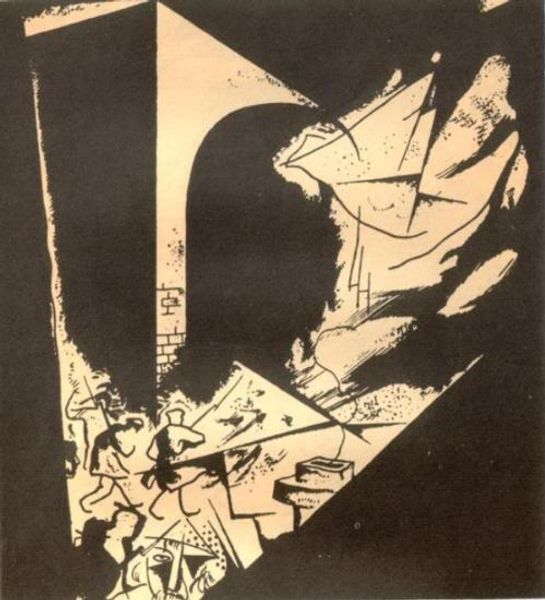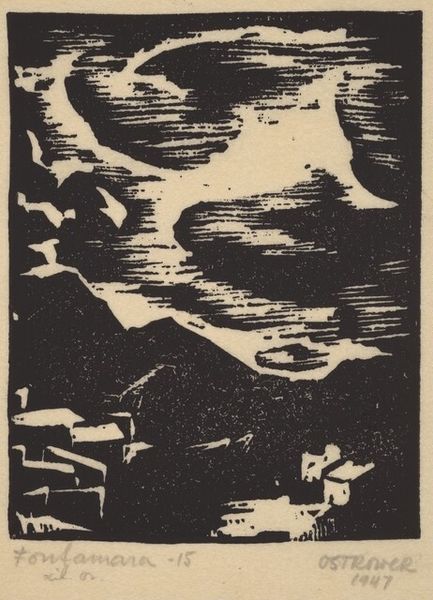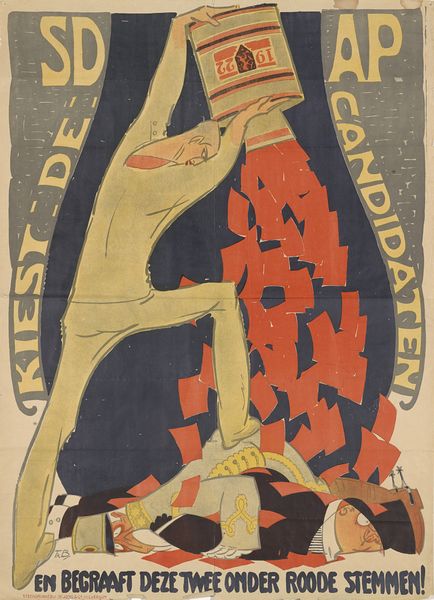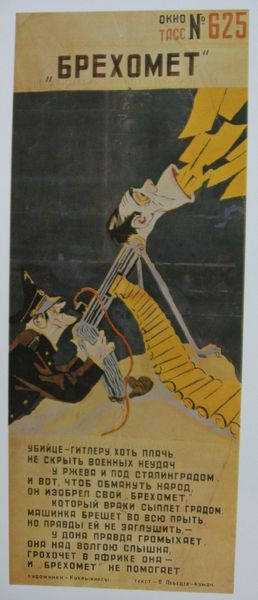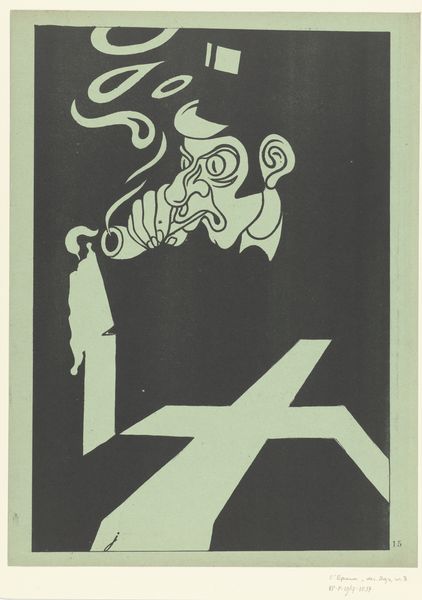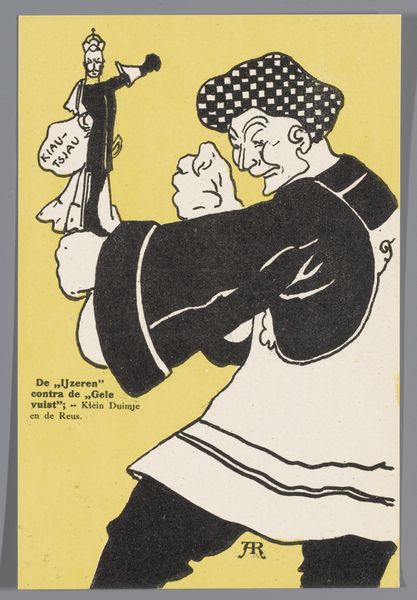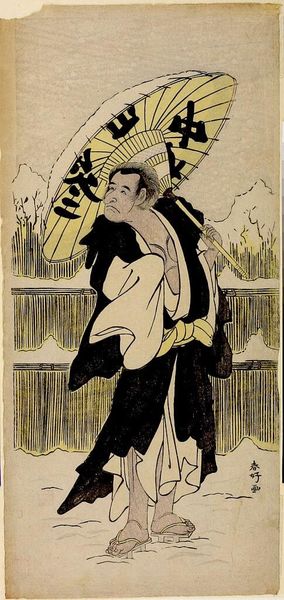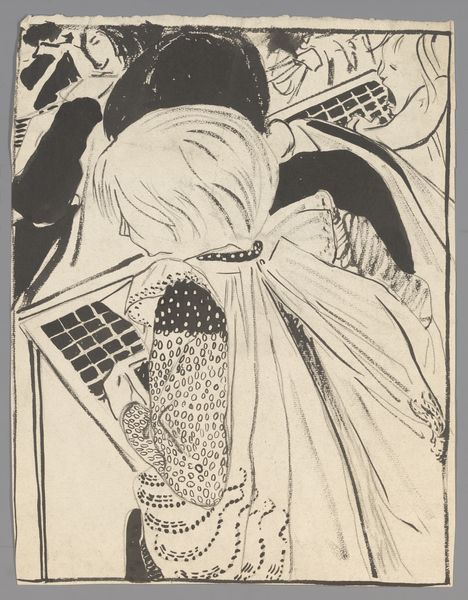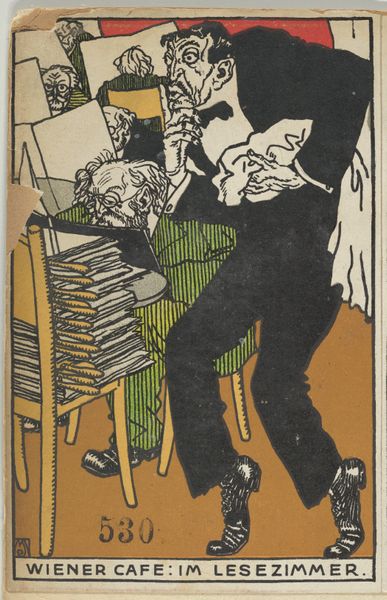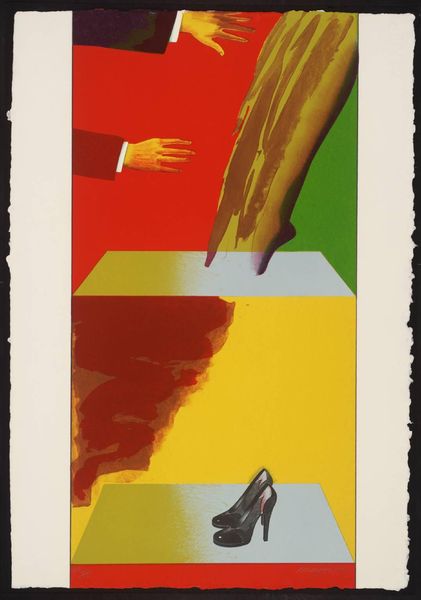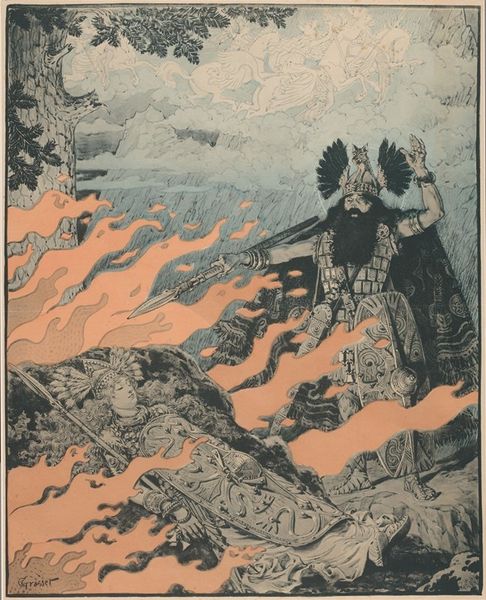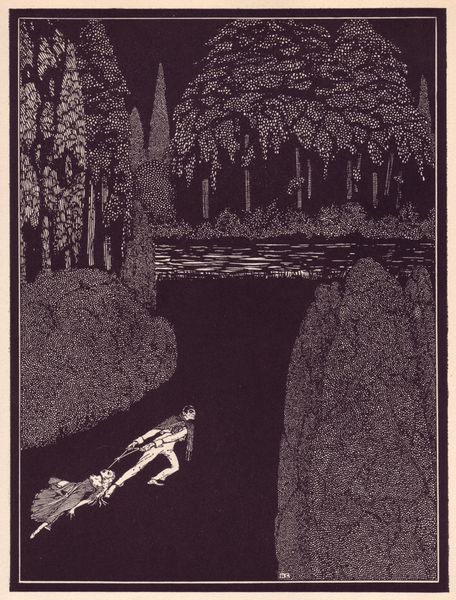
graphic-art, print, poster
#
graphic-art
#
art-nouveau
# print
#
caricature
#
figuration
#
poster
Copyright: Public domain
Curator: Looking at this poster from 1885, “Miss Träumerei,” designed by Ethel Reed as an advertisement for Albert Morris Bagby's new novel, my first impression is that it's all so elegantly melancholic, draped in shadows but with these bursts of brilliant yellow blooms. Editor: Yes, the Art Nouveau aesthetic is striking, using simplified forms and color contrasts. Reed employs flat planes of black, cream, and that vibrant yellow to depict the scene, emphasizing the commercial intent of mass production via printed material, likely lithography. Curator: I'm immediately drawn to the title “Miss Träumerei,” which I believe means “daydream” in German, and to how the artist positions the woman at the piano—her profile suggests both elegance and profound introspection. It captures a private moment made public, somehow. Editor: Precisely. It’s an intentional visual economy designed to capture attention and convey meaning with efficiency. The materials themselves—paper, ink—facilitate the wide distribution of the image, commodifying both art and literature for a growing readership. Notice too, the very modern graphic design promoting Lamson, Wolffe, & Co publishers. Curator: Those bright, almost dandelion-like flowers draw the eye—but is it possible the darkness isn’t so much gloom as protective solace? The musical theme, and "daydream" association suggests something more. I also like how her signature nestles confidently between text announcing the cost and vendors... Editor: An intriguing proposition. What seems like an aesthetic choice serves also the purpose of selling art as affordable leisure—as a dream one can buy. The medium becomes integral to both the distribution of the literary product and its cultural consumption. Curator: So while it's an advertisement for a book, it also becomes a dreamy object in its own right. An intriguing reflection of how desires, emotions, and dreams got neatly packaged and delivered via art back then. Editor: Indeed, a vivid testament to the intersection of art, industry, and aspiration in the late 19th century, with layered historical relevance, which hopefully our discussion shed some light on today.
Comments
No comments
Be the first to comment and join the conversation on the ultimate creative platform.
